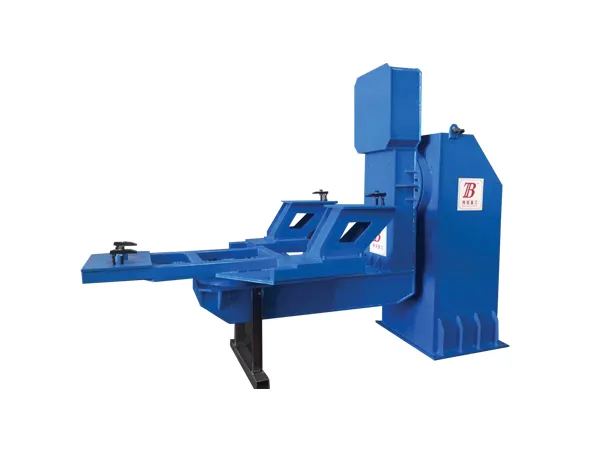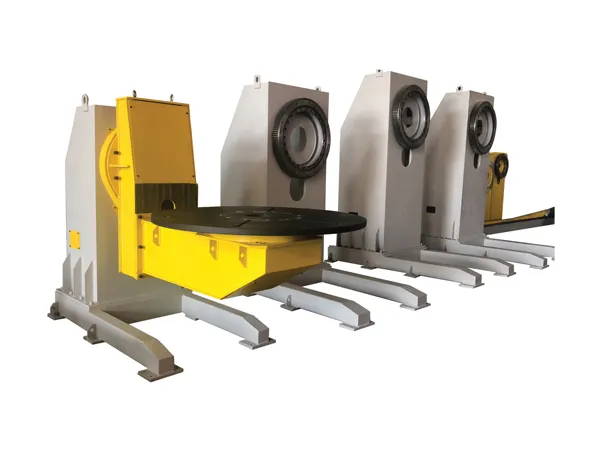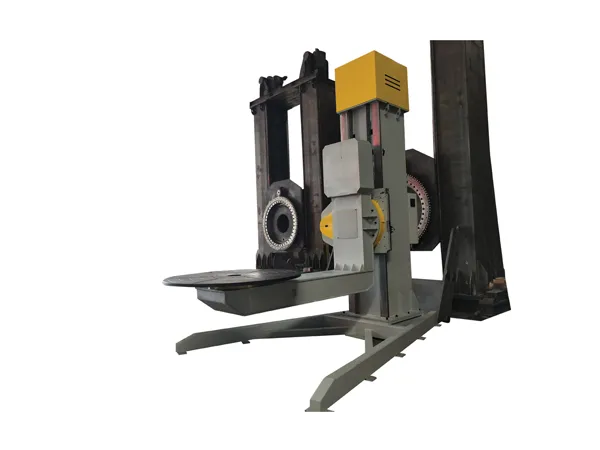A welding positioner significantly improves welding efficiency, quality, and safety by rotating and tilting workpieces into optimal positions for the welder. Choosing the right one requires careful consideration of your specific needs and projects.

What it is: This is the maximum weight the positioner can safely and effectively handle while rotating and tilting. It's arguably the most critical factor.
How to determine your need:
Weigh your heaviest workpiece: Use a scale or consult design specifications.
Factor in fixturing: Include the weight of any jigs, clamps, or tooling used to secure the workpiece to the positioner.
Add a safety margin (essential!): Overestimate your weight requirement by at least 20-30%. This accounts for potential inaccuracies, future heavier projects, and extended equipment life. It's better to have too much capacity than not enough.
Consequences of underestimating:
Damage to the positioner: Premature wear and tear on motors, gears, and bearings.
Unstable operation: Jerky movements, difficulty maintaining position, and potential tipping.
Safety hazard: Risk of workpiece falling or causing injury.
Types of Load Capacities: Positioners have two common load capacity ratings:
Horizontal Load Capacity: The maximum weight that can be supported when the table is in a horizontal position (0 degrees tilt). This is usually the highest load capacity.
Vertical Load Capacity: The maximum weight that can be supported when the table is in a vertical position (90 degrees tilt). This is usually less than the horizontal load capacity because the cantilevered load puts more stress on the system.
Key takeaway: Calculate the total weight accurately and always add a safety margin to ensure safe and reliable operation.
What it is: This refers to the rotational speed of the positioner's table, measured in revolutions per minute (RPM).
How to determine your need:
Welding process: Different welding processes require different speeds. For example:
GTAW (TIG) & GMAW (MIG) on thin materials: Often require higher RPMs for faster, more consistent welds.
SMAW (Stick) & SAW (Submerged Arc Welding) on thick materials: Typically need lower RPMs for slower, controlled deposition.
Workpiece diameter: Smaller diameter workpieces need higher RPMs to achieve the desired surface speed for welding. Larger workpieces need lower RPMs.
Desired travel speed: Think about how fast you want the weld bead to move. RPM is directly related to travel speed. A slower RPM will result in a slower travel speed. A faster RPM will result in a faster travel speed.
Operator skill: Experienced welders might prefer faster rotation speeds, while beginners may benefit from slower, more controlled movements.
Adjustable RPM is crucial: Look for positioners with a variable speed control to fine-tune the rotation based on the specific application. Consider a wide RPM range for maximum versatility.
Key takeaway: Consider your welding process, workpiece size, and desired travel speed to determine the appropriate RPM range for your positioner. Variable speed control is highly recommended.

What it is: This refers to the range of angular movement that the positioner's table can achieve. It's measured in degrees from horizontal (0°) to vertical (90°) or beyond.
How to determine your need:
Workpiece geometry: Complex shapes and multi-faceted assemblies often require a wider tilt angle range to access all weld joints comfortably.
Welding position requirements: Some welding codes or specifications may dictate specific welding positions (flat, horizontal, vertical, overhead). The tilt angle must be sufficient to achieve these positions.
Ease of access: Tilting the workpiece can improve ergonomics and reduce welder fatigue by bringing the weld joint into a more comfortable and accessible position.
Common Tilt Angle Ranges:
0° to 90°: A very common and versatile range, suitable for many welding applications.
0° to 135° or beyond: Provides even greater flexibility for accessing complex geometries.
Fixed tilt: Some positioners offer only a fixed tilt angle, which might be suitable for repetitive, specific tasks, but lacks versatility.
Key takeaway: Assess the complexity of your workpieces and the required welding positions to determine the necessary tilt angle range. Look for a positioner that allows for easy and secure locking at various angles.
Other Important Considerations:
Table Size and Shape: Choose a table that is large enough to accommodate your typical workpieces. Options include round, square, and custom shapes. Consider the table material - steel is robust, but may need a non-conductive coating for certain welding processes.
Control Options:
Foot Pedal Control: Allows the welder to control the rotation with their foot, freeing up their hands for welding.
Hand Pendant Control: Offers convenient control of rotation, tilt, and speed from a handheld device.
Programmable Controllers: For automated or repetitive welding tasks, programmable controllers can precisely control the positioner's movements.
Motor Type and Torque: Choose a motor that provides sufficient torque to handle the load at the desired rotation speed. Look for features like overload protection and smooth, consistent performance.

Positioner Type:
Benchtop Positioners: Smaller, portable units suitable for lighter workpieces.
Floor-Standing Positioners: Larger, more robust units designed for heavier and larger workpieces.
Headstock-Tailstock Positioners: Ideal for long, cylindrical workpieces, providing support at both ends.
Turntable Positioners: Designed for rotating workpieces in a horizontal plane.
Brand Reputation and Support: Choose a reputable manufacturer known for quality, reliability, and good customer service.
Safety Features: Look for features like emergency stop buttons, overload protection, and stable construction to ensure safe operation.
Power Requirements: Ensure the positioner's power requirements are compatible with your facility's electrical system.
Budget: Welding positioners range in price from a few hundred dollars to several thousand. Set a realistic budget based on your needs and prioritize features that are most important to your applications.
Integration with Welding Robots: If you plan to use welding robots in the future, choose a positioner that is compatible with robot integration.
By carefully considering these factors, you can choose a welding positioner that will significantly improve your welding productivity, quality, and safety.
No. 1 Intersection of Chuangye Avenue and Weilai Avenue,
Yiyang County,Luoyang City, Henan Province, China
+86 400-0379-069
Copyright © 2023 An Automated Welding and Cutting Equipment Manufacturer Focusing on Welding Column Boom and Welding Rotator | All Rights Reserved Technical support: ShangXian